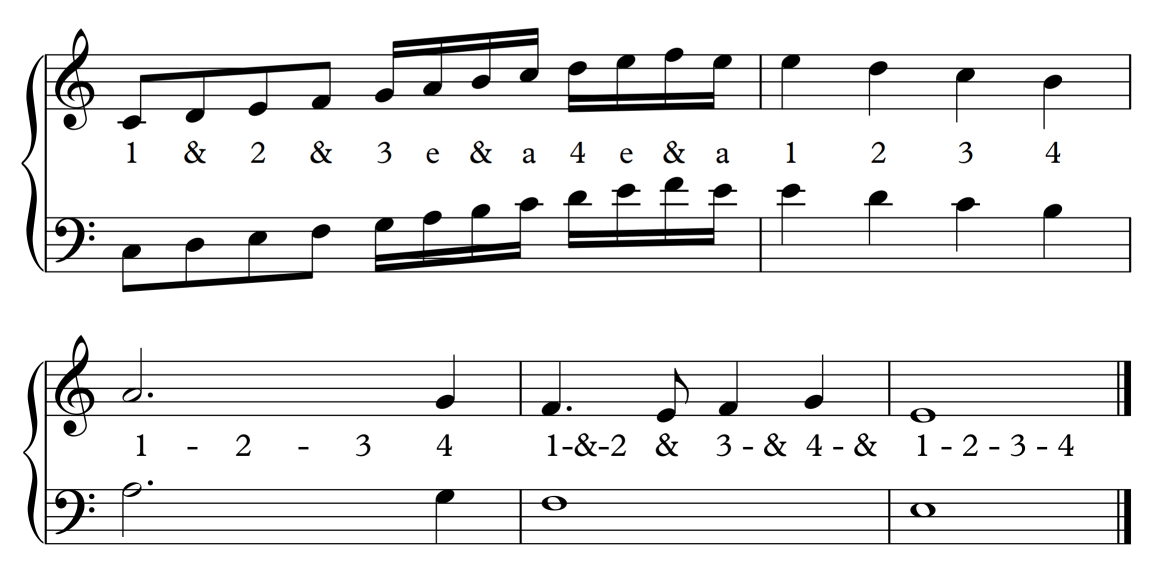Introduction to Music
for those wanting to become musicans, or improve their musicianship
Measures and rhythm
Rhythm is the relationship of note values to one another and their placement in a measure. A measure is the space between the two bar lines. We are measuring beats. If we say that a 1/4 note is one beat long, then in the above example, each measure adds up to 4 beats. Remember that a 1/2 note is twice as long as a 1/4, thus equaling two beats. It is important to keep in mind as you learn to play or sing that you keep each similar note value the same length throughout the piece of music. For example, no matter where in the music you are, a 1/4 note will take up the same amount of time as any other 1/4 note.
As you can see a few notes have dots after the notehead. We describe these as dotted-[whatever the note value of the note is]. A 1/4 note with a dot is called a ‘dotted quarter’. Memorize this saying: A dot increases the length of a note by half its value. That’s a mouthful.
Take the dotted half-note as an example. A 1/2 note is 2 beats long. Half of 2 is 1. So, a dotted half-note is 2+1 or 3 beats long. A dotted-quarter note is equal to one plus a half-beat. Since an 1/8 note is half the value of a 1/4, an 1/8 note is half a beat long. So, a dotted-quarter note is equal to a quarter plus an eight or 1 + .5 or 1.5 (1 and-a-half) beats long. An 1/8 note almost always follows a dotted-quarter note. Any note value can be dotted.
Review the example above and use the numbers to help identify the note values. A dash between numbers indicates the note lasts for that many beats. In order to count 1/8 and 1/16 notes, we need to subdivide the beat into smaller parts. For 1/8 notes, the first of the two 1/8 notes is always the beat’s number. The 2nd half is ‘&’, said ‘and.’ For 1/16 notes, we subdivide the beat into 4 parts. The first is always the number of the beat, the 2nd is ‘e’, the 3rd is ‘&’ and the 4th is ‘a’ (said ‘uh’).
(Note that the next to last measure in the bass clef has a different rhythm than the treble clef. It is held for four beats. This is common in piano music and scores. If you count four beats per measure, focusing on the treble clef part, then you just hold down, if you were playing piano, the bass clef note for four beats).
Try clapping the examples. Whenever there is a dash between numbers, clap the first number, but keep the hands together until the dashes end. Keep the counting steady. You can count out loud, or better yet, use a metronome – there are many online sources for computer based metronomes – or the second hand of a watch or clock to keep the beat steady. The next section will have more on counting.
Next time: Time signatures and counting

